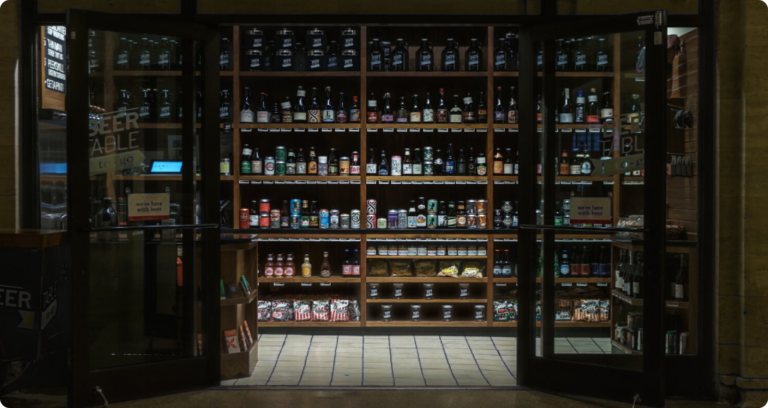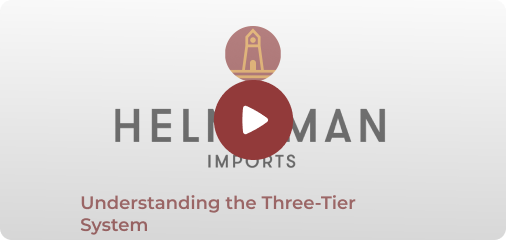The more you get into the United States wine and spirits market, the more it becomes like an old souk: twisting and turning and very, very confusing.
Today we are going to delve into a particularity (although not totally unique to) the United States market: the phenomenon of the “control state.”
As we have elaborated on in other blog posts, there are open states and control states (and franchise states and four-tier states – those will be a topic for another day)
What Are Control States?
As the three-tier system developed, some states elected to place the entirety of their distribution under the state government. In these “control states,” the government typically operates a monopoly over the wholesale distribution of liquor, which means that they have a direct hand in importing, warehousing, and distributing alcoholic products. Additionally, they often regulate the retail sale of liquor through state-run or state-contracted stores.
The primary goal of this system is to maintain strict control over the sale of alcohol, with the intent of promoting responsible consumption, generating revenue for the state, and preventing illegal sales. While liquor control states may vary in the extent of their control and regulations, they all share a common thread of government oversight in the alcohol industry, distinguishing them from the more common system of private liquor distribution seen in most other U.S. states These include states like Maine, New Hampshire, Vermont, Pennsylvania, Ohio, West Virginia, Virginia, North Carolina, Alabama, Mississippi, Idaho, Montana, Wyoming, and Oregon.
How do US Control States Work?

Each of them is a bit special, but they share a few general characteristics in that there is no distributor because it is completely controlled by the state government. In some states (Pennsylvania), but not all (Ohio), the retail is controlled and owned by the state government as well. In some states, the on-premise must buy from stores in a cash-and-carry-like system, and in some, they may buy from the state distribution. The below list provides a framework for how many control states work, but remember, each one varies.
-
Government Monopoly on Wholesale Distribution: In control states, the government often maintains a monopoly on the wholesale distribution of alcoholic products. This means that the state government or an appointed agency is responsible for importing, purchasing, warehousing, and distributing alcoholic beverages to licensed retailers.
-
Retail Sales Control: Control states also exert control over the retail sale of alcohol. In many cases, they operate state-owned retail stores, commonly known as “ABC” (Alcoholic Beverage Control) stores or “state liquor stores,” where consumers can purchase alcohol. Some control states may allow private retailers to sell alcohol, but they are subject to strict regulations and oversight.
-
Pricing and Markup: Control states usually set the prices for alcoholic products sold at both the wholesale and retail levels. They often apply a markup to the cost of products, which contributes to state revenue. This pricing structure can vary widely among control states and can impact the affordability of alcoholic beverages.
-
Licensing and Regulation: Control states establish comprehensive licensing and regulatory frameworks to govern the sale, distribution, and consumption of alcohol. These regulations can cover aspects such as licensing requirements for retailers, legal drinking age enforcement, hours of sale, and the types of products that can be sold.
-
Revenue Generation: One of the key motivations behind the control state system is revenue generation. By controlling the distribution and pricing of alcoholic beverages, the state can generate significant revenue through taxes, markup, and licensing fees.
-
Promoting Responsible Drinking: Control states often emphasize responsible alcohol consumption and public health. They may have stricter rules regarding the sale of alcohol to intoxicated individuals and underage customers.
How can I sell spirits in Control States?
So how do you sell product? Well, brands often work with what might seem like a national distribution company but is actually termed “a broker,” i.e., they don’t actually purchase your products but just shepherd them through the system at a lower margin (usually around 10 percent).

You can think of control states more like a big grocer than anything: you can sell to them in two ways: a special listing (sometimes referred to as an LTO) and a full listing (in which your products are placed in a footprint of stores).
Often taxes are very high in these markets, and they are very competitive to get into because certain ones, like Pennsylvania or Ontario (a Canadian province), are some of the biggest buyers in North America.
The long and the short of it is it might be a hard ask for some of these states, but you should definitely not avoid them as they can get you strong results. This is where Helmsman can help. We know the ins and outs of the US control states, including their rules, regulations, and unique attributes. If you’re debating on entering a control state or need help untangling the confusing rules of compliance across all the states, please reach out to inquiries@helmsmanimports.com as we can save you the time and headaches that go along with registering in control states.





